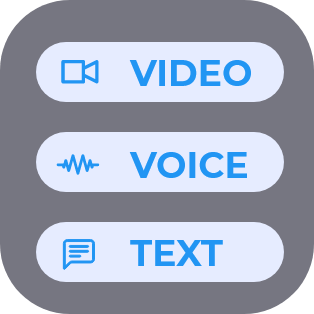Winning a global competition to enter a pilot is great. However, when it comes to delivery, that’s when the hard work is done.
So, when Beyond Virtual started a pilot program with the Israeli ministry of education last September, we had two goals in mind. We hoped not only that the pilot’s results will validate our assumption that our tool is working, but also that it will actually improve the student’s spoken English skills.
Some months later, we can say that the results were beyond our expectations.
Helping the underprivileged
In December 2021, the ministry of education’s R&D department conducted a competition among 6 startups from around the world. All of them were using voice assistant technology to enhance spoken English.
The panel titled Beyond Virtual (formerly, cocohub) as first runner-up, and one of 3 tools to be implemented in schools. Previously, we won the Israeli track of the Global EdTech Startup Awards, highlighting our potential in the education field.
Spoken English has been deemed a strategic pain point in Israel, where lots of kids are growing up to become workers in companies that are looking for the global market. By then, the lack of ability to speak English properly can be harmful to their chances of being accepted. This problem is even more prevalent in disadvantaged areas and communities, where there are few opportunities to have English-speaking partners. The pilot, a collaboration between the ministry of education and CET (Center for Educational Technology), concentrated mainly in these areas, in northern Israel.
During the last few months, we worked directly with a fantastic team of early adopters, teachers who stepped up to try the newest technologies with their students. Together we built several conversations for the virtual humans, tested them with the teachers, then sent it to the students. Among the topics of conversation were vacations, events which the students attended, hobbies and self-introduction, and food; some others were based on stories and vocabularies from the students’ textbooks, adapted to quizzes.
Another conversation we built – probably the most popular one – was about the FIFA World Cup. The virtual human asked the students, for example, if they’re watching the tournament, what team they’re rooting for, what was their favorite game. It also provided insights of its own, picking from a variety of built-in options. Actually, this became the talk of the day among the students – “what did Sarah tell you when you told her you’re a fan of Portugal?”. Generally, this virtual human talked with dozens of students, for over 10 hours in a span of 2 weeks.
“One of us”
Following the conclusion of the pilot stage, the teachers created a presentation about the tools they used, with the advantages and challenges of operating it. According to one teacher, the virtual humans became “one of us”. Rather than an app or a software, students saw her as a friend or a family member.
In one class, the teacher asked the students to speak with the virtual humans in their free time, at home or wherever they want. Once they succeed, she said, they uploaded the conversation to a class WhatsApp group. “It created a positive competition among students, they became very proud of themselves when they did it perfectly. They bragged who finished first, or who got the best responses from the characters”, the teacher noted.
Another teacher noted that creating the virtual human’s identity with the students was a big advantage. “They were making something that they like, something different, something close to them. So this is what made it really special and different”. One of the teachers added: “It was very fun, it was different, and the students had a great time”. Students also had a great time asking the virtual teaching assistants to repeat a question. That way, they could hear the correct pronunciation of a certain word or phrase.
One of the teachers highlighted another advantage of the platform. She talked about the opportunity to watch the student speak freely, without fears of classroom anxiety. “One of the students said that she doesn’t feel embarrassed to speak with the virtual human”, she said. “The thing is, in class, I do not always have the time to listen or to hear the 30 students speaking. And this gave me the chance to listen to them, to see them speaking. There are some very shy students who did not like the speaking class. However, they had complete conversations with Sarah. So it was amazing”.
Education use case junior high students – survey results
From 2.3 to 3.8
After concluding the pilot, we sent a feedback questionnaire to the participating students. We asked them to rate their self confidence before speaking with the virtual humans and afterwards. The results were pretty impressive. On a scale of 1 (very low) to 4 (very high), the students gave a grade of 2.3 before, and 3.8 after speaking with the virtual human.
We also asked the responders to reflect on how important those conversations were in improving their self confidence. They gave an average grade of 3.3, out of 4. We also asked them if learning and practicing with virtual humans was better, worse or similar to other methods they tried to improve their spoken English skills. More than 50% said that it’s the best method they tried. The rest said that “it’s about the same” as others.
With those (and other) great results and validation, we’re looking forward to entering more schools and academic institutions, and expanding exponentially. not only in Israel, but abroad – for the 2023-24 school year.












